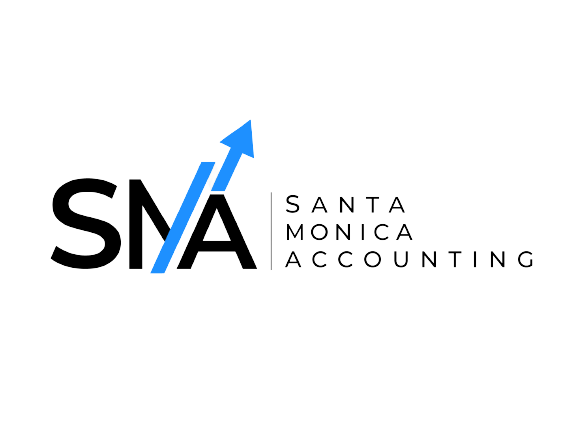Cash flow management is essential for the success and sustainability of any small business. Effective cash flow management ensures that a business has enough liquidity to cover its day-to-day expenses, invest in growth opportunities, and weather unforeseen challenges. In this comprehensive guide, we’ll explore key strategies and best practices for managing cash flow effectively, helping small business owners navigate the complexities of financial management with confidence and clarity, all while emphasizing the importance of sound accounting principles.
This is an info box
The first step in effective cash flow management is to understand your business’s cash flow cycle. This involves identifying the sources of cash inflows (such as sales revenue, investments, and loans) and the uses of cash outflows (such as operating expenses, inventory purchases, and debt repayments). By mapping out your cash flow cycle, you can anticipate periods of cash surplus and shortage, allowing you to plan and allocate resources accordingly.
Identifying Cash Inflows
Sales Revenue
Sales revenue is typically the primary source of cash inflows for most businesses. This includes cash sales and collections from accounts receivable. Understanding the timing and pattern of your sales can help you predict when cash will be available. Seasonal trends, market demand, and sales cycles should be analyzed to forecast revenue accurately.
Investments
Investments can provide significant cash inflows, whether they come from personal funds, investor contributions, or returns on existing investments. Knowing when these funds will be available helps in planning large expenditures or expansion activities. Additionally, keeping track of investment performance can provide insights into future cash availability.
Loans and Financing
Loans and lines of credit are crucial for managing cash flow, especially during periods of cash shortage. Identifying the timing, terms, and repayment schedules of these financial instruments is essential. Understanding the conditions under which additional financing can be secured helps in planning for unforeseen cash flow gaps.
Identifying Cash Outflows
Operating Expenses
Operating expenses include rent, utilities, salaries, and other overhead costs necessary to keep the business running. Regularly reviewing and categorizing these expenses can help identify areas for cost-saving and efficiency improvements. Understanding fixed versus variable costs is crucial in predicting cash outflows accurately.
Inventory Purchases
For businesses that sell physical products, inventory purchases represent a significant cash outflow. Managing inventory levels to avoid overstocking while ensuring sufficient supply to meet customer demand is a delicate balance. Implementing just-in-time (JIT) inventory practices or using inventory management software can optimize cash use.
Debt Repayments
Debt repayments, including both principal and interest, must be meticulously planned to avoid cash flow disruptions. Understanding the repayment schedules and terms of all outstanding debts helps in forecasting cash requirements. Exploring options for refinancing or consolidating debt can also provide cash flow relief.
Mapping Out the Cash Flow Cycle
Mapping out your cash flow cycle involves creating a visual representation of when cash inflows and outflows occur within a given period, typically monthly or quarterly. This cycle can reveal patterns and highlight periods of cash surplus or shortage. Here’s how you can effectively map and manage your cash flow cycle:
Cash Flow Statement
A cash flow statement is a financial document that summarizes the amount of cash and cash equivalents entering and leaving a company. It provides a snapshot of the company’s financial health and its ability to generate cash to fund operations, pay debts, and invest in growth. Regularly preparing and reviewing cash flow statements helps in understanding the overall cash position.
Cash Flow Forecasting
Cash flow forecasting involves predicting future cash inflows and outflows based on historical data and anticipated business activities. This proactive approach helps in identifying potential cash shortages well in advance, allowing you to take corrective actions such as securing additional financing, adjusting payment terms with suppliers, or accelerating receivables collection.
Once you understand your cash flow cycle, it’s crucial to monitor your cash flow regularly. This involves tracking incoming and outgoing cash flows on a daily, weekly, or monthly basis using cash flow statements or accounting software. Regular monitoring allows you to spot any discrepancies or anomalies early on and take corrective action to maintain healthy cash flow levels.
Forecast Cash Flow
Forecasting cash flow involves projecting future cash inflows and outflows based on historical data, sales forecasts, and business plans. By forecasting cash flow, you can anticipate upcoming cash needs and develop strategies to address them proactively. Cash flow forecasting enables you to make informed decisions about spending, investments, and financing, helping you avoid cash crunches.
Optimize Accounts Receivable
Managing accounts receivable effectively is critical for maintaining a healthy cash flow. This involves invoicing customers promptly, setting clear payment terms, and following up on overdue payments diligently. Consider offering incentives for early payment and implementing credit policies to minimize the risk of bad debts.
Control Accounts Payable
Managing accounts payable is equally important for cash flow management. This involves negotiating favorable payment terms with suppliers, optimizing inventory levels to minimize carrying costs, and prioritizing payments based on due dates and cash availability. Implementing automated payment systems can also help optimize accounts payable processes and improve cash flow management.
Maintain Cash Reserves
Building and maintaining cash reserves is essential for small businesses to weather unexpected expenses, economic downturns, or seasonal fluctuations in cash flow. Aim to set aside a portion of your cash inflows as reserves to cover emergencies or fund strategic initiatives.
Monitor and Manage Expenses
Controlling expenses is crucial for maintaining positive cash flow and profitability. Conduct regular expense reviews to identify areas where costs can be reduced or eliminated without sacrificing quality or efficiency. Look for opportunities to renegotiate contracts, consolidate suppliers, or renegotiate terms to lower expenses.
Anticipate major expenses and investments in advance and incorporate them into your cash flow forecasts and budgets. Whether it’s equipment purchases, facility expansions, or marketing campaigns, planning for major expenses allows you to allocate resources strategically, secure financing if needed, and mitigate cash flow disruptions. Consider timing major expenditures to coincide with periods of strong cash flow or explore alternative financing options such as loans, leases, or equity investments to spread out costs over time.
In conclusion, effective cash flow management is essential for the financial health and success of small businesses. By understanding your cash flow cycle, monitoring cash flow regularly, forecasting cash flow, optimizing accounts receivable and payable, maintaining cash reserves, controlling expenses, and planning for major expenses and investments, you can ensure that your business has enough liquidity to meet its financial obligations and seize growth opportunities. Implementing these strategies and best practices can help small business owners navigate the complexities of cash flow management with confidence and clarity, enabling them to achieve long-term success and sustainability in today’s competitive business landscape.

Thank you for reading with SMA!
Seeking help with your bookkeeping and accounting?
We’re right here for you!





























